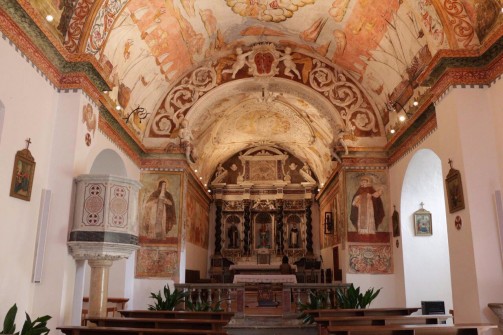The church of Our Lady of the Rosary was built during the 17th century in the Catalan-Aragonese style. The most important artistic element is the wall paintings that enrich the interior. The cartouche in the scene depicting the encounter between St. Paul of Thebes and St. Anthony Abbot reads “ad instructionem rudium, et ad excitationem piorum” (to instruct the illiterate and to enrage the devout). Indeed, the religious-popular art of the time was intended to indoctrinate, through images, those who could not read. Noteworthy are the scenes depicting the circumcision of Jesus and the Battle of Lepanto, the latter the subject of disquisition as it is speculated that it may have been the theme chosen by Costantino Nivola in the graffito in the church of Sa Itria. The paintings were made between 1738 and 1754 by the painters Pietro Antonio and Gregorio Are Carru (father and son) from Seneghe, who worked in Sardinia for more than forty years, over a vast area stretching from the Barbagie to Ogliastra. The Are dynasty consistently expressed its own idea of art, tending to respect courtly conventions and strongly linked to the need to educate the popular classes.









